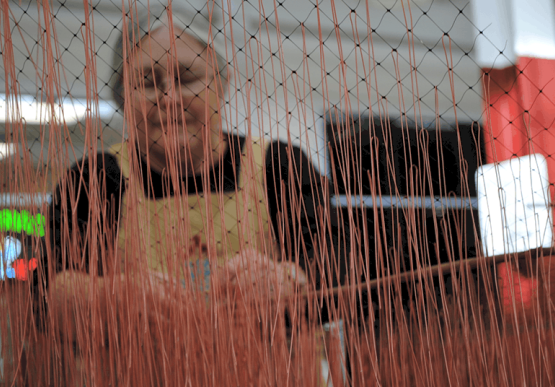About The Artist - Nancy Pulliam Weis
My paper assemblages are based on visual and conceptual ideas drawn from archaeology and anthropology. The work does not intend to be read literally or to explore any particular culture, but rather to look at anthropology and archaeology as metaphors for the discovery and recovery of inner meaning.
Physically in archaeology, and procedurally in other scholarship, we uncover information in small, unconnected bits, piece by piece, allowing one interesting fragment to lead us on a search for the next. Often the connections and patterns we find in the various layers of information come as much from out need to organize ideas coherently as from documentable relationships among the objects or facts. Human beings classify things, assign meaning to them, and arrange them in ways that may or may not be decipherable by others, but which are universally recognizable as artificial forms of organization. Our fascination with mysterious fragments tells us as much about ourselves as about the cultures that produced them.
I am particularly interested in elements of culture that are common to many different societies. Nearly every non-technological society has used similar natural objects (feathers, stones, bones, twigs) for decoration. Circles, spirals, and handprints have been universally used as symbols, but their meanings and purposes vary. There seems to be a common visual language that leads us to similarities in what we recognize as ritual objects or holy space.
The primary material in this work is handmade paper. For each work, several sheets of paper are formed with geometric holes in them. The sheets are layered and laminated together, and surface is used to support images made by drawing, printing, or stenciling. Various objects such as printed or painted fragments, textiles, beads, and natural or found objects are glued or sewn to the surface.
My work represents the hidden influence of past peoples/ideas/self on the present, and also the interaction of the rational and emotional/spiritual components of experience. I have not attempted to nail down a consistent theory of what particular information causes what kind of response; in this as well as in many other discussions I find questions intrinsically more interesting than answers.


